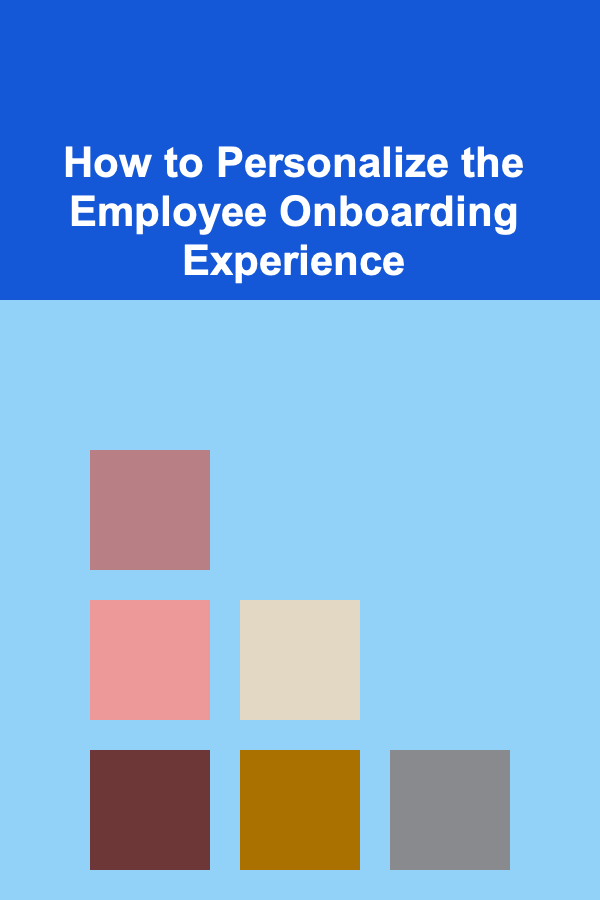
How to Doodle Character Design: Simple & Fun
ebook include PDF & Audio bundle (Micro Guide)
$12.99$9.99
Limited Time Offer! Order within the next:
Not available at this time

Character design is one of the most enjoyable and creative aspects of visual storytelling, whether it's for a comic, an animation, or just personal exploration. When it comes to doodling character design, the process can be laid-back, playful, and filled with endless possibilities. Whether you're an aspiring artist or a seasoned professional, the ability to create memorable characters starts with understanding the fundamental principles of design, allowing you to experiment freely without the pressure of creating "perfect" characters.
In this article, we'll explore how to doodle character design in a simple and fun way. We'll break down some key tips and techniques that will help you build engaging characters, while also ensuring the process remains relaxed and enjoyable.
1. Start with Simple Shapes
When doodling characters, it's crucial not to overcomplicate things right from the start. The best way to begin is by focusing on simple shapes: circles, ovals, squares, and triangles. These basic forms will serve as the foundation for your character, helping you block out the body structure quickly.
For example:
- Head: Start with a simple circle or oval for the head.
- Body: Use a rectangle, square, or oval to block out the torso.
- Limbs: Cylinders or simple lines will serve as the arms and legs.
These basic shapes can be refined later, but they provide a solid starting point and help you maintain proportion and balance in your design.
Why it works:
- Working with basic shapes makes the process faster and less intimidating.
- It allows for flexibility. You can always tweak proportions later.
- It helps keep the design grounded and ensures that the character doesn't look too stiff.
2. Experiment with Silhouettes
Once you've got the basic structure down, the next step is to work on the silhouette of your character. A strong silhouette is one of the most essential aspects of a memorable character. A good silhouette is instantly recognizable and gives your character a unique identity.
Start by experimenting with different poses and shapes to see how the character's personality can be conveyed through their outline. Try exaggerating certain features like the head size, posture, or limb length. Play around with different angles and proportions until you find a silhouette that stands out and fits the character's personality.
Tips for a strong silhouette:
- Keep it simple: Avoid too many intricate details at this stage.
- Play with proportions: A large head, tiny limbs, or long body can convey different personalities.
- Ensure contrast: Make sure the character's outline is clear and doesn't blend into the background.
Why it works:
- It helps you quickly convey the personality of your character.
- It creates a clear, distinctive look that people will remember.
- Silhouettes are often more effective than detailed drawings in early stages.
3. Focus on Facial Expressions
The face is one of the most important aspects of character design. A character's expression tells the audience a lot about their emotions, motivations, and personality. While doodling, you can experiment with various facial features to quickly communicate a character's emotions and characteristics.
- Eyes: The size and shape of the eyes can convey different moods. Large eyes may suggest innocence or curiosity, while small, narrow eyes might indicate mystery or fierceness.
- Mouth: The shape of the mouth is vital for expressing emotions. A wide smile indicates happiness, while a frown conveys sadness or anger.
- Eyebrows: Position and shape play a huge role in setting the emotional tone. Raised eyebrows suggest surprise, while furrowed brows express anger or determination.
Why it works:
- It's a quick way to give your character personality.
- You can make adjustments easily without worrying about fine details.
- Experimenting with different expressions can lead to surprising and interesting designs.
4. Embrace Exaggeration
One of the fun parts of doodling character design is the freedom to exaggerate features. Exaggeration brings personality and energy to your characters. You don't have to stick to realistic proportions---playing with proportions can help emphasize a character's key traits.
For example:
- Tiny body, large head: This gives the character a more youthful or whimsical look.
- Giant hands or feet: This might suggest a clumsy or comical character.
- Long limbs or torso: This can create a more elegant or exaggeratedly heroic feel.
Exaggeration doesn't always mean making your character "over the top." It's about emphasizing one or two features that help tell their story.
Why it works:
- It makes your character stand out visually.
- It emphasizes certain traits, making them more memorable.
- Exaggeration helps communicate the personality more effectively than realism.
5. Play with Clothing and Accessories
What a character wears often reveals something about their background, personality, or role in the story. When doodling, think about how clothing and accessories can further express who your character is.
- Casual clothing: Suggests a laid-back personality.
- Armor or uniforms: Implies that the character is in a more serious or action-packed role.
- Accessories: Hats, glasses, jewelry, or unique items like weapons or tools help make the character distinct.
Don't worry about intricate details. Focus on the overall vibe and how the clothing adds to the personality of the character. You can refine these details later when you start working on the final design.
Why it works:
- Clothing and accessories are an easy way to quickly communicate more about your character.
- They add personality and flair without requiring complex detail.
- They can enhance the storytelling aspect of your character.
6. Use Color to Convey Mood
Even in the simplest of doodles, adding color can elevate your character's design. While you don't need to use complex color theory, a well-chosen palette can do wonders for setting the mood or tone of your character.
- Warm colors (reds, yellows, oranges): Often used for energetic, passionate, or aggressive characters.
- Cool colors (blues, greens, purples): Great for calm, serene, or mysterious characters.
- Neutral colors (browns, grays, blacks): These can make a character appear more grounded, serious, or classic.
You can also think about how color interacts with your character's design. For example, a brightly colored outfit might suggest an extroverted personality, while muted tones might imply shyness or introversion.
Why it works:
- Color instantly adds personality and mood to your character.
- It's an easy way to make your character more visually appealing.
- Color helps make the character more memorable and relatable.
7. Don't Be Afraid to Break the Rules
When doodling character design, there are no hard-and-fast rules. Feel free to break the conventions of anatomy, proportion, and design to create something truly unique. Often, the best and most interesting designs come from pushing boundaries.
- Mix styles: Combine different cultural, historical, or fantasy influences.
- Use abstract shapes: Experiment with unconventional shapes or forms for a completely unique look.
- Play with scale: Make one feature of your character huge and others tiny, just for fun.
Why it works:
- Breaking the rules often results in something creative and unexpected.
- It allows you to explore new design territories and discover new techniques.
- It's fun and liberating---there are no mistakes in doodling!
8. Iterate and Evolve Your Designs
Doodling is about exploration, not perfection. As you doodle, allow your character to evolve. Don't be afraid to tweak features, experiment with different looks, or adjust their personality as the design develops.
Sometimes, the first sketch is just the beginning, and the character's true essence emerges as you continue to play around with their appearance and expressions. Don't worry if your first few designs don't feel "perfect"---just keep refining until you hit upon something that feels right.
Why it works:
- Iteration allows you to discover new, more interesting designs as you go along.
- You'll feel more invested in the character as they evolve.
- Doodling is a process, and the more you practice, the better your designs will become.
9. Consider the Character's Story
While doodling, it's always good to think about your character's backstory, even if it's just a vague idea. The more you think about your character's past and motivations, the better you'll be able to design visual cues that hint at their story.
For example:
- A character with battle scars could suggest a warrior background.
- A character with a certain item or companion could tell you something about their journey.
- The way a character stands, walks, or gestures can also provide subtle hints about their past.
10. Have Fun and Let Loose
The most important thing when doodling character designs is to have fun! The pressure to create a "perfect" design can be overwhelming, but doodling is about freedom and creativity. Enjoy the process, play with new ideas, and let your imagination run wild. Don't worry about being perfect---just let your pencil (or stylus) flow and see where it takes you!
Why it works:
- Creativity thrives when there's no pressure.
- Letting loose results in unique, often unexpected designs.
- Having fun with your doodles will keep you engaged and motivated.
Conclusion
Doodling character designs is an exciting and liberating process that anyone can enjoy. By starting with simple shapes, experimenting with silhouettes, exaggerating features, and playing with colors and accessories, you can quickly develop characters that are unique, expressive, and full of personality. The key is to keep it simple, embrace the playful nature of doodling, and remember that mistakes are part of the creative journey. So grab a pen, start doodling, and let your imagination soar!

How to Create a Seasonal Wardrobe Capsule
Read More
How to Organize Your Finances to Save for a Home Purchase
Read More
How to Personalize the Employee Onboarding Experience
Read More
How to Use Email Marketing for Customer Retention: A Simple Checklist
Read More
What Tips Can Help You Maintain an Organized Closet?
Read More
How To Debunk the Moon Landing Hoax (Advanced Techniques)
Read MoreOther Products

How to Create a Seasonal Wardrobe Capsule
Read More
How to Organize Your Finances to Save for a Home Purchase
Read More
How to Personalize the Employee Onboarding Experience
Read More
How to Use Email Marketing for Customer Retention: A Simple Checklist
Read More
What Tips Can Help You Maintain an Organized Closet?
Read More